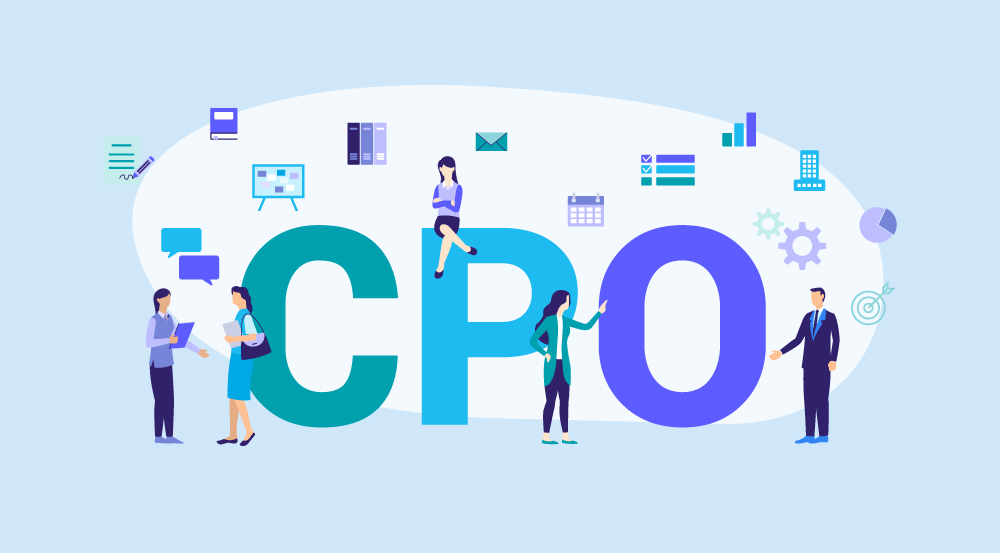Five years ago, the Chief Process Officer (CPO) was a role most people had at Google. In many organizations, it sounded like a glorified title for someone buried in spreadsheets and workflow charts, part strategist, part compliance watchdog, part “we should probably do this because our competitors are doing it” hire.
Fast forward to 2025, and it’s a different story entirely.
Now, the CPO sits at the epicenter of digital transformation. Not as a background character but a key driver of organizational intelligence, efficiency, and resilience. Their voice is no longer optional in boardrooms and strategic sessions. It’s essential.
So what changed? And what does it mean to be a Chief Process Officer in this new landscape?
Let’s walk through it.
From Compliance to Competitive Edge
Once upon a time, process leadership was synonymous with governance. Policies, protocols, and paperwork. The work was important, even—but it rarely set hearts racing. It was viewed as a function of control, not innovation.
But in 2025, that narrative’s flipped on its head.
Today’s most forward-thinking CPOs aren’t optimizing for efficiency but unlocking competitive advantage. They enable companies to adapt faster, make smarter decisions, and deploy resources where they matter most.
And process intelligence tools like KYP.ai are not just mapping what’s happening. They’re understanding why it’s happening. They’re identifying digital friction, decoding human behavior across systems, and helping every team, from Finance to HR to IT. Work smarter, not harder.
Data-Rich. Story-Driven.
Let’s face it: raw data doesn’t inspire action. It overwhelms.
Great CPOs don’t just push dashboards. They tell stories. They translate operational chaos into clarity. They see patterns others miss. They connect the dots between workflows, tech adoption, and people’s day-to-day experience.
One moment, they’re knee-deep in process mining data. The next? They’re making the case for an organizational shift with a compelling story that earns buy-in from even the most change-resistant executives.
In short, the modern CPO is a translator. A bridge. A synthesizer of complexity. Someone who makes process intelligence feel not just accessible but indispensable.
The Human Side of Process
Here’s something people often forget: behind every process is a person.
An agent is trying to meet deadlines while jumping across four apps. A team leader is trying to report on productivity but is missing the full picture. A finance analyst does heroic work monthly to close the books because the system says one thing, and reality says another.
The modern Chief Process Officer sees this. They feel it.
They understand that the process isn’t just a system flowchart. It’s an ecosystem of human effort. So when they look at inefficiency, they don’t just see wasted minutes. They see stress. Missed opportunities. Burnout.
That’s why tools like KYP.ai have become essential. The surface is not workflow trends but people’s impact. They highlight where employees struggle when digital complexity creates friction and how changes might improve, not disrupt, the daily work rhythm.
Strategy’s Secret Weapon
Think about it: how many strategic plans fall apart because execution breaks down?
You’ve got vision at the top, execution at the edges, and somewhere in between, the process gaps swallow momentum whole.
That’s why the CPO is no longer a back-office role. They’re central to strategy. They don’t just make execution possible. They make it predictable, scalable, and responsive.
The CPO’s data becomes your early warning system when market conditions shift. When new tech is introduced, they ensure it doesn’t just get installed, but is integrated. When teams need to do more with less, they help you cut waste without cutting impact.
They’re the connective tissue between what the company wants to do and what it can do.
Tech-Savvy, But Not Tech-Obsessed
Let’s be clear: modern CPOs are fluent in tech. They understand automation, AI, cloud systems, and digital workflows. They partner closely with CIOs and CTOs.
But they also know that throwing tools at problems doesn’t work.
They ask tougher questions. What are we trying to achieve? How will this impact the humans in the loop? Are we solving a real bottleneck—or just digitizing dysfunction?
It’s not about adopting tech for tech’s sake. It’s about orchestrating tools to serve people and strategy.
That’s where process intelligence platforms like KYP.ai stand out. They don’t just measure digital activity. They provide real-time visibility into how people work, what drains their time, and where there’s hidden potential to unlock.
Measuring What Matters
Metrics have always mattered. But in 2025, the best CPOs will know which ones to chase.
They’re not just tracking throughput and utilization. They’re measuring experience. Adaptability. Resilience.
They want to know: How fast can we pivot when the market changes? How often do our processes evolve? Where are we investing time, and is that time moving us forward?
They understand that productivity without clarity is noise. And efficiency without empathy? That’s a short road to disengagement.
So they ask better questions. They also build measurement systems that reflect a more complete truth—outputs and outcomes.
Change Leadership, Reimagined
Here’s a moment of truth: no one loves change. At least, not when it’s done to them.
But change with them? That’s a different story.
Today’s CPO is a master of momentum. They understand the psychology of transformation. They don’t hide behind Gantt charts—they walk the floor. They talk to teams. They know how to listen.
And they’re not afraid to slow down when needed. To pause, adjust, and explain. Because they know that sustainable change isn’t about speed, it’s about trust.
So, What Makes a Great CPO in 2025?
It’s not just process fluency. It’s emotional intelligence. Strategic thinking. A willingness to challenge the status quo with data to back it up.
They’re part analyst, part architect, part advocate.
They lead with curiosity. They ask, “What’s going on here?” not to catch someone slipping but to strengthen the system.
They work cross-functionally, not just because they have to, but because that’s where real insight lives.
And they never forget: behind every number, there’s a name. Behind every process is a purpose.
Final Thoughts
In a world moving faster than ever, the organizations that win aren’t just the ones with the best ideas. They’re the ones with the best execution engines. The ones that can adapt, evolve, and stay aligned through complexity.
That’s the role of the Chief Process Officer in 2025.
They’re no longer hidden in the operational shadows. They’re lighting the path forward. One insight, one improvement, one empowered team at a time.
So, if your business is ready to stop reacting and start evolving. Maybe it’s time to rethink what “process leadership” means with KYP.ai.
Because in the right hands, it’s not a title.
It’s a transformation.








